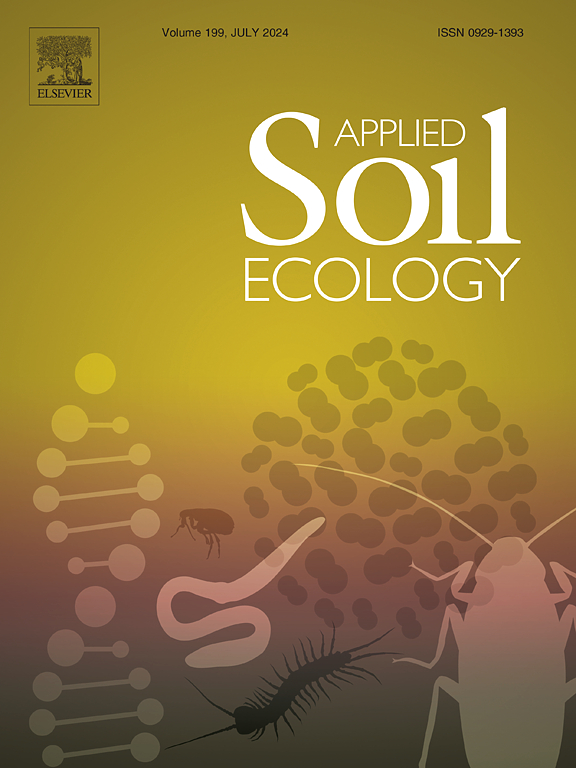Response of soil phosphorus components to black carbon in seasonally frozen areas: Insight into ecoenzymatic stoichiometry
IF 4.8
2区 农林科学
Q1 SOIL SCIENCE
引用次数: 0
Abstract
Freeze–thaw cycles, as abiotic stressors, have a strong impact on soil biochemical processes in seasonally frozen areas. Black carbon (biochar) is an important alternative to traditional fertilizers, but its effect on freeze–thaw cycles remains unclear. Therefore, in this study, a three-year field experiment was conducted in seasonally frozen areas. Two biochar application modes were used in this experiment: a single high-dose addition (BL: 15 t·ha−1) and three low-dose additions (BS: 5 t·ha−1). The control group (CK) without biochar was established. The effects of different treatments on the soil physical properties and stoichiometric balance under freeze–thaw cycles were analyzed. The key factors driving microbial metabolic limitation and the potential mechanism of action of biochar were subsequently analyzed from the perspective of ecoenzymatic stoichiometry. Finally, the relationships between microbial metabolic limitations and soil phosphorus components were subsequently explored. The results show that freeze–thaw cycles improved soil nutrient availability but reduced soil structural stability. Biochar reduced the soil stoichiometric imbalance, and the improvement effect of the BL treatment on the stoichiometric imbalance was weaker than that of the BS treatment (the average effect sizes of BL and BS in the three years were − 0.136 and − 0.191, respectively). The soil physical properties, soil substrates and stoichiometric imbalance collectively explained 67 % of the variation in microbial carbon limitation (vector length, VL) and 58 % of the variation in phosphorus limitation (vector angle, VA). Soil microbial metabolic limitation is the key factor regulating changes in soil phosphorus components. Biochar reduces VL and VA, promoting the transformation of stable-P into labile-P. The average percentage of labile-P in the BS treatment was greater than that in the BL and CK treatments, reaching 13.06 %. The research revealed the relationships between microbial metabolic limitation and soil phosphorus components, providing a new perspective for exploring the effects of biochar on the soil phosphorus cycle in seasonally frozen areas.

求助全文
约1分钟内获得全文
求助全文
来源期刊

Applied Soil Ecology
农林科学-土壤科学
CiteScore
9.70
自引率
4.20%
发文量
363
审稿时长
5.3 months
期刊介绍:
Applied Soil Ecology addresses the role of soil organisms and their interactions in relation to: sustainability and productivity, nutrient cycling and other soil processes, the maintenance of soil functions, the impact of human activities on soil ecosystems and bio(techno)logical control of soil-inhabiting pests, diseases and weeds.
 求助内容:
求助内容: 应助结果提醒方式:
应助结果提醒方式:


